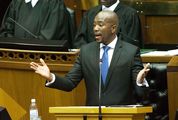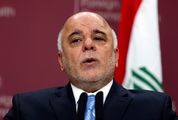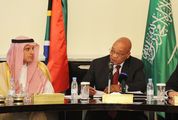THE Reserve Bank’s monetary policy committee’s (MPC) decision to hike the benchmark interest rate by 50 basis points on Thursday might have been predicted the very moment governor Lesetja Kganyago began reading the MPC statement.
The statement went straight for the jugular, opening with: "Since the previous meeting … the inflation outlook has deteriorated significantly mainly due to exchange rate and food price developments."
It then went on to detail the Bank’s new revised inflation forecasts, which show a pretty dramatic deterioration compared to forecasts at the committee’s last meeting two months ago.
The Bank has raised its forecast for this year’s average inflation rate to 6.8%, from 6% previously, and next year’s to 7%, from 5.8%.
Those are big moves in just two months. And worse, from an inflation-targeting central bank’s point of view, is that inflation is now seen breaching the 6% top of the target range later this year and staying in breach right to the end of next year.
This is worse than a lot of private sector economists’ forecasts. It reflects the almost 13% decline in the trade-weighted exchange rate in the past two months and the intensifying of drought conditions, with food price inflation now expected to jump to 11% late this year.
And all of that doesn’t even factor in the risks from a possible additional electricity tariff hike, or the chance that retailers who have been absorbing the effect of a weaker rand and higher food prices until now, may suddenly hike up their prices when they can’t absorb any more.
Mr Kganyago said on Thursday that he was not an "inflation nutter". And although he may tend to the hawkish, he arguably isn’t — even at 6.75%, which is where the benchmark repo rate now sits, the real inflation-adjusted interest rate will be mildly negative in future months when inflation increases to 7%.
While it is debatable, that is still a monetary-policy stance that is vaguely supportive of economic growth, although hardly dovish.
"The committee faced the continuing dilemma of a deteriorating inflation environment and a worsening growth outlook," Mr Kganyago said.
But faced with this kind of deterioration in the inflation outlook, any inflation-targeting central bank would have to consider taking pretty firm action in an attempt to put the lid on it.
Mr Kganyago has made it clear the Bank will act pre-emptively to prevent inflation and inflation expectations running amok. Thursday’s decision appeared to deliver on that.
Even so, the decision was far from unanimous, with only three of the six MPC members favouring an increase of 50 basis points and one voting against any hike.
The reasons are easy to see in the sharp deterioration of the Bank’s growth forecast — it has now joined the club of less than 1% growth, with a forecast of 0.9% this year and just 1.6% next year, down from 2.1%. The tone of the statement was pretty bleak altogether. And there certainly is a case to be made that higher interest rates can only harm growth, without helping nearly enough with inflation, and particularly that they harm confidence, which is already at multiyear lows.
"As noted on a number of occasions in the past, the MPC is of the view that the growth constraints facing the economy are primarily of a structural nature and cannot be solved solely by monetary policy," Mr Kganyago emphasised.
But in an environment in which the credibility of economic policy is delicately balanced, and the rand is performing worse than other emerging-market currencies because of negative sentiment towards SA specifically, policy makers can’t afford to take too many chances with policy credibility.
For that reason alone, the decision to stay firm on inflation targeting was important.
And with the market widely predicting 50 basis points, the committee would have had to do a lot of explaining had it taken any other decision.

Reserve Bank gorernor Lesetja Kganyago in Pretoria on Thursday. Picture: FREDDY MAVUNDA
THE Reserve Bank’s monetary policy committee’s (MPC) decision to hike the benchmark interest rate by 50 basis points on Thursday might have been predicted the very moment governor Lesetja Kganyago began reading the MPC statement.
The statement went straight for the jugular, opening with: "Since the previous meeting … the inflation outlook has deteriorated significantly mainly due to exchange rate and food price developments."
It then went on to detail the Bank’s new revised inflation forecasts, which show a pretty dramatic deterioration compared to forecasts at the committee’s last meeting two months ago.
The Bank has raised its forecast for this year’s average inflation rate to 6.8%, from 6% previously, and next year’s to 7%, from 5.8%.
Those are big moves in just two months. And worse, from an inflation-targeting central bank’s point of view, is that inflation is now seen breaching the 6% top of the target range later this year and staying in breach right to the end of next year.
This is worse than a lot of private sector economists’ forecasts. It reflects the almost 13% decline in the trade-weighted exchange rate in the past two months and the intensifying of drought conditions, with food price inflation now expected to jump to 11% late this year.
And all of that doesn’t even factor in the risks from a possible additional electricity tariff hike, or the chance that retailers who have been absorbing the effect of a weaker rand and higher food prices until now, may suddenly hike up their prices when they can’t absorb any more.
Mr Kganyago said on Thursday that he was not an "inflation nutter". And although he may tend to the hawkish, he arguably isn’t — even at 6.75%, which is where the benchmark repo rate now sits, the real inflation-adjusted interest rate will be mildly negative in future months when inflation increases to 7%.
While it is debatable, that is still a monetary-policy stance that is vaguely supportive of economic growth, although hardly dovish.
"The committee faced the continuing dilemma of a deteriorating inflation environment and a worsening growth outlook," Mr Kganyago said.
But faced with this kind of deterioration in the inflation outlook, any inflation-targeting central bank would have to consider taking pretty firm action in an attempt to put the lid on it.
Mr Kganyago has made it clear the Bank will act pre-emptively to prevent inflation and inflation expectations running amok. Thursday’s decision appeared to deliver on that.
Even so, the decision was far from unanimous, with only three of the six MPC members favouring an increase of 50 basis points and one voting against any hike.
The reasons are easy to see in the sharp deterioration of the Bank’s growth forecast — it has now joined the club of less than 1% growth, with a forecast of 0.9% this year and just 1.6% next year, down from 2.1%. The tone of the statement was pretty bleak altogether. And there certainly is a case to be made that higher interest rates can only harm growth, without helping nearly enough with inflation, and particularly that they harm confidence, which is already at multiyear lows.
"As noted on a number of occasions in the past, the MPC is of the view that the growth constraints facing the economy are primarily of a structural nature and cannot be solved solely by monetary policy," Mr Kganyago emphasised.
But in an environment in which the credibility of economic policy is delicately balanced, and the rand is performing worse than other emerging-market currencies because of negative sentiment towards SA specifically, policy makers can’t afford to take too many chances with policy credibility.
For that reason alone, the decision to stay firm on inflation targeting was important.
And with the market widely predicting 50 basis points, the committee would have had to do a lot of explaining had it taken any other decision.




















Change: -0.47%
Change: -0.57%
Change: -1.76%
Change: -0.34%
Change: 0.02%
Data supplied by Profile Data
Change: -1.49%
Change: 0.09%
Change: -0.47%
Change: 0.00%
Change: -0.02%
Data supplied by Profile Data
Change: 0.48%
Change: 0.91%
Change: 0.38%
Change: -0.15%
Change: 0.93%
Data supplied by Profile Data
Change: 0.24%
Change: -0.21%
Change: 0.26%
Change: -1.05%
Change: -1.41%
Data supplied by Profile Data